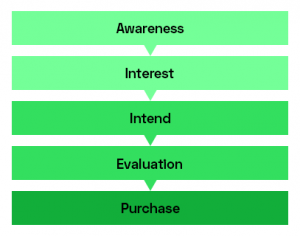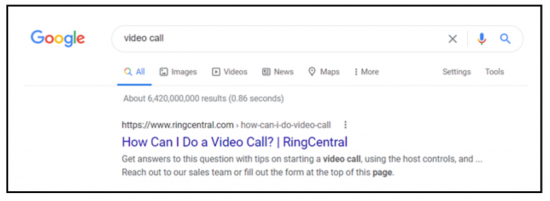When it comes to digital content, it can be difficult to stand out in today’s market. Improving the value of a webpage isn’t always about the copy on the page. Content also needs optimized meta descriptions to improve things like click-through rates (CTR) and the perception of customer options and result quality.
So what are meta descriptions?
Search engine optimization (SEO) meta descriptions are short blurbs of text that briefly describe the content of webpages. These appear within search engine results pages (SERPs) when a user searches for a term or phrase.
Meta descriptions are written in HTML summarizing the webpage’s content. In the HTML code, the description looks like this:
<meta name= “description” content= “here is where you place the description”/>
Google determines meta description lengths based on pixels. The limit for desktop is 920 pixels, or about 158 characters, and 680 pixels on mobile devices, or roughly 120 characters. When creating these descriptions, you need to keep these restrictions in mind.
An engaging sales page coupled with an optimized meta description can increase traffic to your page exponentially and boost conversions. It will set you apart from the search snippets chosen by Google.
While meta descriptions are search snippets, search snippets don’t have to be meta descriptions (confusing, we know). Meta descriptions are an HTML tag you control while search snippets can be HTML tags or descriptions generated by Google.
Meta descriptions appear in SERPs with title tags and slugs. A title tag is a version of the page title that’s added to the HTML. This can be the same as or different from the headline in the copy. The slug is the URL for the page.
The importance of meta descriptions
Meta descriptions are invaluable element of your marketing strategy. They are essentially a mini ad for your webpage. Carefully curated meta descriptions look better in search results and increase click-through rates.
Here are some reasons why you should use SEO meta descriptions:
- Look more professional in search results. If you craft your meta descriptions carefully, they will look more appealing to browsers. In a sea of search results, you must set yourself apart from the competition. Consider meta descriptions if you are planning a content marketing refresh.
- Higher click-through rates increase search rankings. Meta descriptions don’t increase search rankings by themselves. However, the increased click-through rates resulting from effective meta descriptions will. Search rankings are a vital component of web traffic from search engines. The first-page search results from Google capture 71-92% of all traffic clicks. This is compared to 6% of traffic clicks on the second page.
- They are an important part of a larger rich snippet plan. SERPs can be so much more than just the title tag, slug, and meta description. There can be other additions that add value to your search results.

The process
So, how do you write effective meta-descriptions? Take a look at the step-by-step plan outlined below.
1: Identify your customer’s journey
Make sure you know your target audience and their optimal buying journey. You also need to understand what happens at each stage of the marketing funnel. The marketing funnel tracks your customer’s journey from their initial awareness of your brand to the point where they make a purchase.
Meta descriptions can optimize your marketing funnel. For example, potential customers may stumble across your brand in a search or be evaluating whether or not you’re the best option. Either way, meta descriptions are an easy way for potential customers to get to know you.

2: Set a tone that is consistent with your brand
You want potential traffic to get to know your brand through a limited number of characters, so write meta descriptions that illustrate who you are and why they should click on your page. You need to figure it out your brand message therefore before creating your meta descriptions.
All your meta descriptions to have a clear and consistent voice. Setting a consistent tone within your descriptions will give your business a sense of authenticity and foster brand recognition. Try to make your audience feel like they know your company and what you stand for.
3: Answer your audience’s questions
What does your audience want to know, what is your page about, and why should a browser choose you? When you answer these questions, always put the most important information first. For example, if your company can provide internet phone services from home, tell them the most prominent features of this in the first sentence.
4: Add the primary keyword
Consider what the primary keyword should be for your webpage. These should be the keywords your audience is searching for in a search engine. When coming up with keywords, think about what you offer and what your audience will type in to look for you.
Also, take advantage of trending social headlines. Keep track of prominent figures like influencers to gather relevant keywords.
Keywords will appear in bold letters in the meta description. For example, below, when video call was placed in Google, the words are bolded to draw the reader’s eye to them. You want any phrase that contains the keyword to be impactful.

5: Develop benefits-focused content
Make your meta description conversational, but also let your audience know the benefits of clicking on your content. For example, this search tells customers they can ‘Step into the perfect vintage-inspired’ clothing. It also includes a call-to-action. It tells the audience they can ‘Shop now for free shipping over $150!’

Extra tips
On the surface, creating meta descriptions is a straightforward process. Certainly, in the wake of social media marketing, organizations have a lot of practice writing powerful and concise descriptions for content. But there’s still room for improvement and lots more to learn. Here are a few invaluable tips to help you.
Write a meta description for every webpage
- It may be easy to let Google decide what content will show up in the search snippets. However, when it comes to marketing, you want control over what’s visible in the descriptions on SERPs. You also want to create a title tag for every landing page and blog post.
Don’t duplicate meta descriptions
- You want to have a diverse range of meta descriptions and page titles. Avoid using the same language or phrases for multiple landing pages and blog posts. You need to make sure you have a high chance of driving traffic to your site.
This may require you to keep track of all the existing meta descriptions. Use free file sharing apps to allow your content creators to share this information.
Avoid using quotation marks
- Meta descriptions are in HTML, so you must be careful not to use characters that will break that language. If you need to use a quote, use the single quotation mark (i.e. ‘SEO’) instead. This will ensure the integrity of your meta descriptions when they appear in the SERP.
Remember your ABCs (and ABRs)
- Your ABCs stands for ‘always be crafting’ and ABRs means ‘always be researching’. This applies to your existing content as well. You want to be creating new content while refreshing the old.
- The meta descriptions of previous content can be updated in line with prominent trends to keep them relevant.
Don’t overuse keywords
- It’s good to use keywords in your meta descriptions. However, repeating your keyword nine times or more will get you penalized. It will also make for ineffective descriptions. You only have a limited number of characters, so you communicate all the vital information in 50-100 of these.
Be honest in your descriptions
- Don’t try to mislead your audience. You want to catch the reader’s attention and encourage them to click, but you need to keep an eye on ethical considerations. Also, being honest in your content will protect you from any legal implications. Consider looking into the laws for online businesses. Is this us focused
Here are some additional tips:
- Place the keyword near the front of the title.
- Focus on the readers.
- Don’t forget your brand name.
- Write between 50-60 characters.
Takeaways
The creation of meta descriptions gives organizations control over how they present themselves in SERPs. Content Marketers need to consider the company’s brand and target audience when crafting these. Developing this material should be an active part of content creation.
Producing effective meta descriptions will increase your CTR and boost your search rankings. The ability to use this inexpensive method of marketing should therefore be fully utilized. Your team spends time and resources to curate an attractive platform for your audience. By taking advantage of meta descriptions, you’re ensuring that your users will see the fruits of their labor.
Finally, remember to always be creating content and researching for the most up-to-date trends. Nothing is worse than an outdated website and the same goes for your meta descriptions. It’s an easy way to increase website traffic and lead your organization to success.
Looking for more ways to make the most of your content?
Check out more SEO and Content blogs here!

